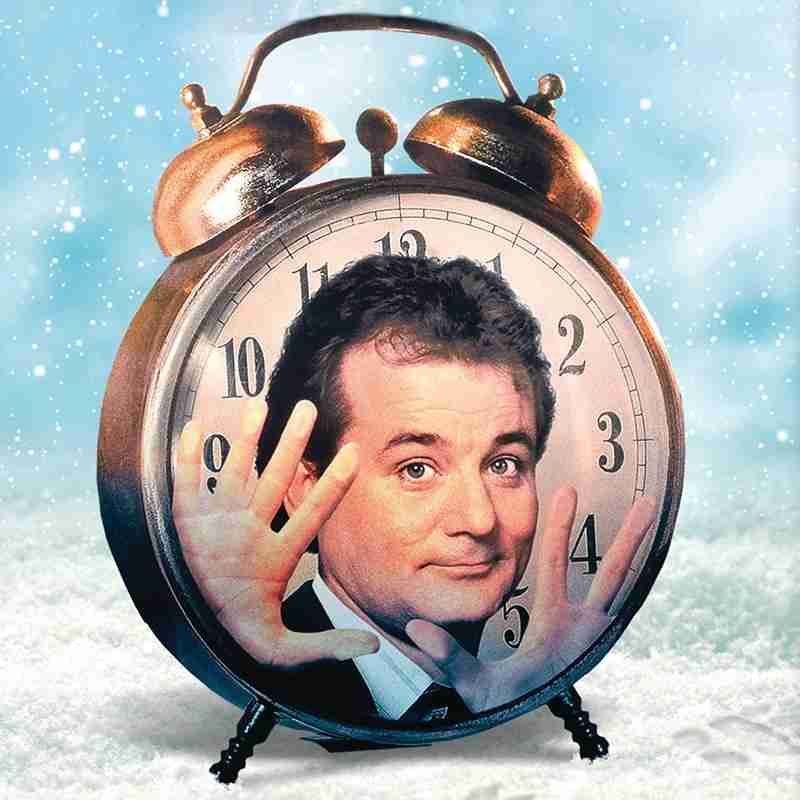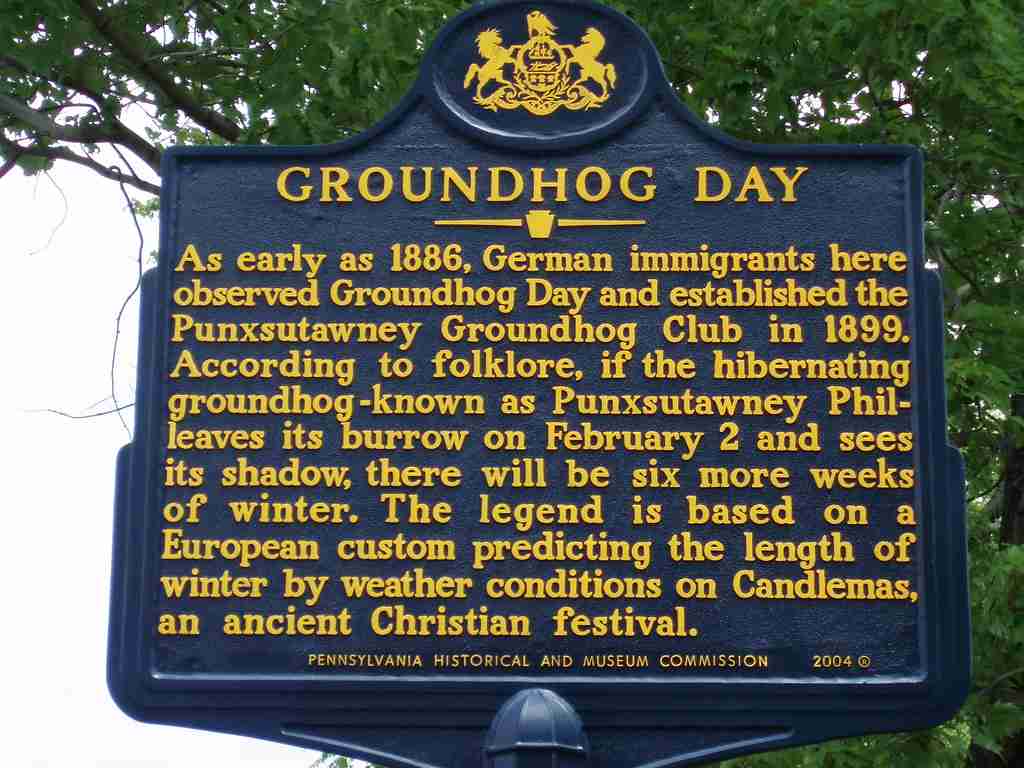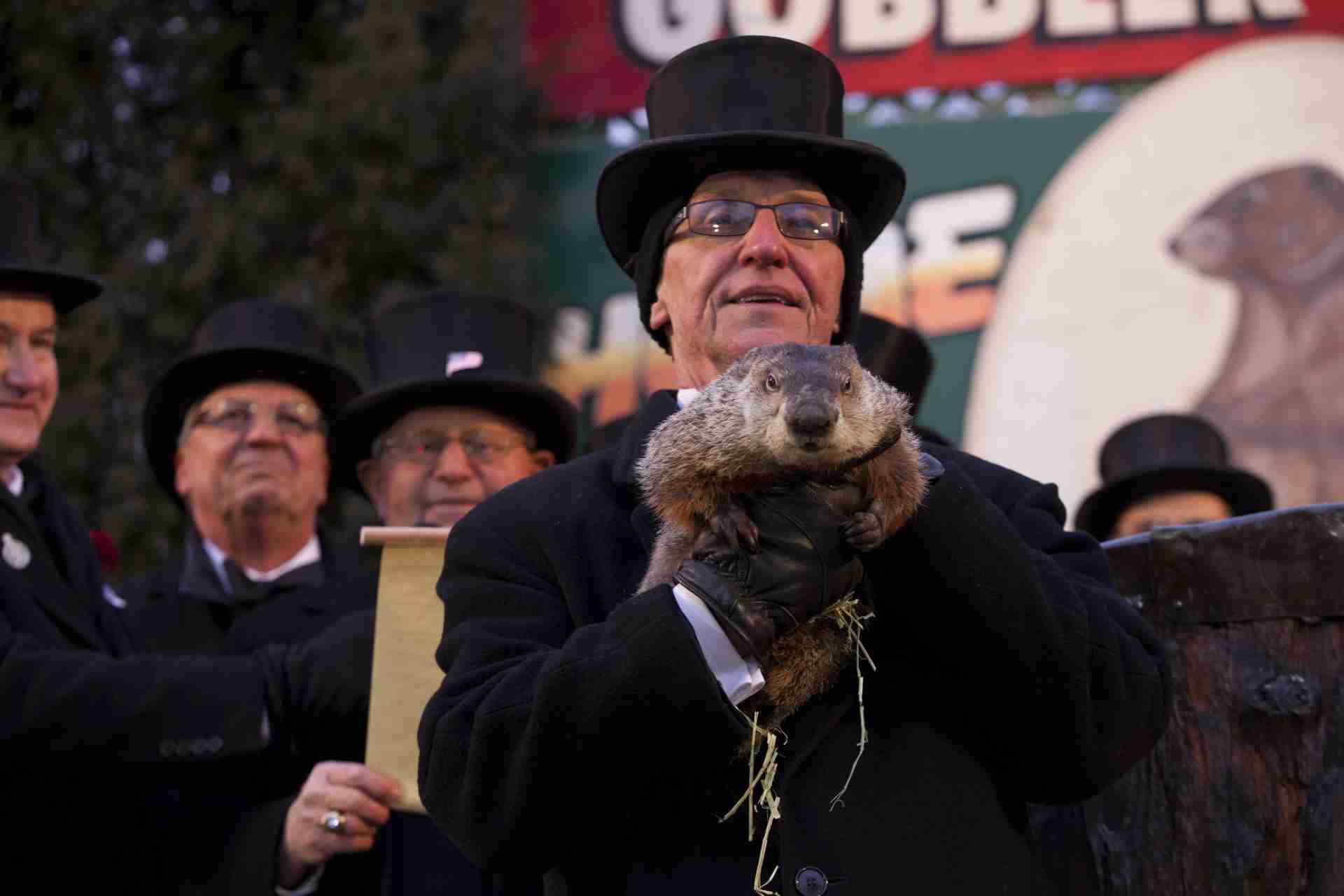22 Fun Facts About Groundhog Day | Forecast Fables
1. Groundhog Day has its roots in Germany.
Groundhog Day’s roots trace back to German traditions brought by Pennsylvania Dutch immigrants. Originating from Candlemas, celebrated on February 2, it was believed that if a badger saw its shadow, winter would last four more weeks.
This evolved into watching groundhogs in the U.S to predict either an extended winter or an early spring.
2. The first official Groundhog Day was celebrated in 1887.
The inaugural Groundhog Day was celebrated on Feb 2, 1887, at Gobbler’s Knob, Punxsutawney, Pennsylvania. Conceived by a newspaper editor and the Punxsutawney Groundhog Club, it featured Phil, the groundhog, as the weather forecaster.
This event, evolving from a German tradition, followed an 1840 diary entry noting a similar practice, marking the start of a long-standing American tradition.
3. February 2nd isn’t just a random date.
Groundhog Day on February 2nd aligns with Candlemas, a ‘cross-quarter’ day marking the midpoint between the winter solstice and spring equinox.
Brought by German immigrants in Pennsylvania, this day traditionally predicts the weather: a sunny Candlemas indicates six more weeks of winter, while cloudy weather suggests an early spring, making it a key date for forecasting seasonal changes.
4. The film ‘Groundhog Day’ popularized the celebration.

The 1993 comedy film ‘Groundhog Day,’ starring Bill Murray, significantly boosted the popularity of the actual Groundhog Day event. Before the movie, thousands visited Punxsutawney’s Gobbler’s Knob; post-release, attendance soared to tens of thousands.
The film, exploring themes of self-improvement and time loops, turned the holiday into a cultural phenomenon, placing Punxsutawney Phil firmly in the spotlight.
5. Punxsutawney Phil’s full name is quite long.
The famous groundhog known as Punxsutawney Phil has a much longer official title: ‘Punxsutawney Phil, Seer of Seers, Sage of Sages, Prognosticator of Prognosticators, and Weather Prophet Extraordinary.’
This elaborate name reflects his esteemed role in the annual Groundhog Day tradition, where his weather prediction is eagerly awaited by many.
6. Phil has met celebrities, including President Reagan.
Punxsutawney Phil, the celebrated Groundhog, has mingled with famous personalities, including meeting President Ronald Reagan in 1986 and appearing on The Oprah Winfrey Show in 1995.
His charm even led to a humorous moment with Oprah questioning if he was drugged, to which his handler assured he simply loved the camera. Phil’s popularity extends to politicians, having been honored by President Reagan and Pennsylvania Governor Ed Rendell.
7. The name Whistle-pig comes from their high-pitched warning scream.
Groundhogs, commonly known as ‘whistle-pigs’ in Appalachia, earned their nickname due to their distinctive high-pitched whistle. This sound, resembling a warning cry, is used to alert other groundhogs of potential dangers like predators.
The term ‘whistle-pig’ reflects this unique behavior, which is crucial for their survival in the wild and is a key aspect of their communication.
8. Phil’s weather predictions have been correct 39% of the time.
Punxsutawney Phil’s weather forecasting accuracy stands at around 39%, as analyzed by the National Climatic Data Center and Stormfax. Despite this, Phil remains a beloved figure in the tradition of Groundhog Day predictions.
This rate, based on predictions since 1887, is only marginally better than random chance and falls below the accuracy of a coin flip.
9. Groundhogs are related to squirrels, chipmunks, and prairie dogs.
Groundhogs, also known as woodchucks, belong to the large squirrel family, Sciuridae, and are part of the marmot tribe, which includes ground squirrels like chipmunks and prairie dogs.
As the largest members of this family, groundhogs share characteristics with their relatives, such as being skilled diggers and creating extensive underground caves, a trait common among these rodent family members.
10. Groundhog Day weather predictions were censored during World War II.
During World War II, Groundhog Day predictions were censored as weather conditions were deemed military secrets, potentially useful to enemies like Germany and Japan.
Consequently, in 1943, the event was canceled, and weather forecasts, including those about groundhogs seeing their shadows, were not broadcast or published to avoid revealing sky conditions to the enemy, impacting the annual tradition significantly.
11. The original Groundhog Day involved eating Groundhogs.
In the early Groundhog Days of the 19th century, including the first celebration in 1887, Punxsutawney Phil’s ancestors were not only forecasters but also part of the menu.
The ‘Groundhog Picnic’ featured groundhog meat as a special dish at the Punxsutawney Elk Lodge, pleasing diners with its tenderness, a far cry from its current celebrity status.
12. Folklore says Punxsutawney Phil drinks a life-extending elixir.
According to folklore, Punxsutawney Phil, the celebrated groundhog, defies his natural 6-8-year lifespan by drinking a ‘magical elixir’ annually at the Groundhog Day picnic.
This tradition, upheld by the Punxsutawney Groundhog Club, supposedly extends Phil’s life by seven years with each sip, maintaining his age at over 135 years and allowing him to continue his weather predictions since 1887.
13. Crowds of up to 40,000 people have attended the Groundhog Day celebration.
Punxsutawney, Pennsylvania, home to under 6,000 residents, hosts the largest Groundhog Day celebration, attracting an average of 20,000 people annually. The 1993 movie ‘Groundhog Day’ significantly boosted attendance, with a record 40,000 attendees in 2020.
This overwhelming turnout even requires local high schools to skip classes, as buses are needed to transport the massive crowds to and from the event at Gobbler’s Knob.
14. Groundhog Day was almost Badger Day.
Groundhog Day’s origin lies in the Candlemas tradition, where animals predict the weather. Initially, in Germany and among English and German Catholics, Badgers were used for weather forecasting.
However, when German settlers in Pennsylvania found Badgers scarce in the early 1800s, they adapted the tradition to local groundhogs, transforming what could have been ‘Badger Day’ into the now-famous Groundhog Day.
15. The Groundhog really can predict the end of winter.
Groundhogs emerging from hibernation naturally signal spring’s approach, not their shadow sightings. This tradition, rooted in Pennsylvania Dutch superstition, lacks scientific backing for accurate winter predictions.
Despite this, the ritual of observing Groundhogs, prevalent in central and eastern U.S., remains a cherished, albeit scientifically unproven, method to speculate about the end of winter and the onset of spring.
16. Phil’s statistics are kept by the Pennsylvania’s Groundhog Club.

The Pennsylvania Groundhog Club, caretakers of Punxsutawney Phil and his family, meticulously records his weather predictions. Phil has forecasted 106 winters and 19 early springs, with some years missing records and one cancellation in 1943 due to World War II.
Despite a generally lower accuracy rate, Phil’s annual predictions at Gobbler’s Knob, a historic site, continue to draw public interest and visitors to his year-round home, the Groundhog Zoo.
17. Canada got its first Groundhog Day in 1956.
Canada embraced the Groundhog Day tradition in 1956 with its first groundhog, Wiarton Willie, in Wiarton, Ontario. Initially, the Groundhog was humorously represented by a fur hat, but Willie soon became a household name for his February predictions.
This tradition, rooted in German customs, flourished in the scenic town of Wiarton, nestled between Lake Huron and Georgian Bay, marking Canada’s foray into this whimsical weather forecasting.
18. The Groundhog Day tradition is popular in the 21st century.
In the 21st century, Groundhog Day has seen a surge in popularity, with attendance at events like Punxsutawney’s reaching over 40,000 in 2020, a significant increase from the usual 20,000.
Despite lacking scientific backing for its weather predictions, this tradition, rooted in German lore, continues to captivate audiences, illustrating its enduring appeal in modern times, even beyond North America.
19. The holiday wasn’t always called Groundhog Day.
Originally known as ‘Candlemas’ in Christian tradition, February 2 marked a day for blessing candles, symbolizing light and warmth in winter. In German folklore, it was ‘Badger Day,’ predicting more winter if a badger saw its shadow.
Over time, as Christianity spread in Western Europe, this date evolved, shifting focus to groundhogs in America and eventually becoming known as Groundhog Day.
20. In Croatia and Serbia, the Bear’s shadow on February 2 predicts extended winter.

In Croatia, Hungary, and Serbia, similar to Groundhog Day, a unique tradition held by Orthodox Christians on February 2 (Candlemas) or February 15 (Sretenje) involves observing bears.
If a bear awakens from its winter sleep and sees its shadow, indicating a sunny day, it is believed to retreat and prolong winter for 40 more days. Cloudy weather, however, suggests an impending end to winter.
21. Groundhogs are true hibernators.
Groundhogs are one of the few mammals that truly hibernate, entering a state of deep sleep from late fall to late winter or early spring, lasting up to six months.
During hibernation, their heart rates slow, and body temperatures drop significantly in underground burrows. This intense hibernation period ends around Groundhog Day, aligning with the time males awaken to seek mates.
22. Other US states have traditions of using unique animals on Groundhog Day.
Besides Punxsutawney Phil, various U.S. states feature their weather-predicting animals for Groundhog Day, including Birmingham Bill in Alabama, General Beau Lee in Atlanta, and Sir Walter Wally in North Carolina.
Expanding beyond groundhogs, New Orleans’ Audubon Zoo introduces Leia the aardvark as a modern twist, while other regions use animals like armadillos and quahogs to forecast the arrival of spring.
FAQs
On February 2, people celebrate Groundhog Day as a festival, where Punxsutawney Phil in Pennsylvania predicts the weather. If sunny and he sees his shadow, expect six more weeks of winter; if cloudy, an early spring.
Groundhog Day was invented by Clymer Freas, a newspaper editor in Punxsutawney and a member of the Punxsutawney Groundhog Club. Originating from German immigrant traditions, the first recorded celebration occurred in 1887.
On Groundhog Day, February 2, Punxsutawney Phil in Pennsylvania predicts the coming season. If sunny and he sees his shadow, six more weeks of winter are expected; if cloudy, an early spring is forecasted.
The largest Groundhog Day celebration occurs in Punxsutawney, Pennsylvania. You can watch it live on local TV channels and online streaming platforms every year on February 2, starting at 7 a.m.
The movie Groundhog Day stars Bill Murray as Phil Connors, a TV weatherman who repeatedly relives February 2 in Punxsutawney, Pennsylvania, while covering the Groundhog Day event, leading to personal growth and self-discovery.







